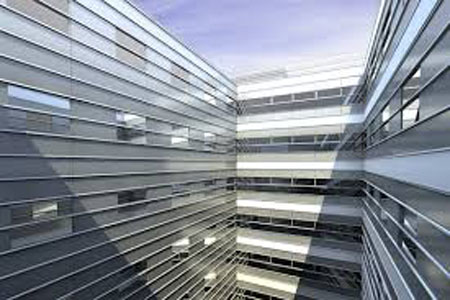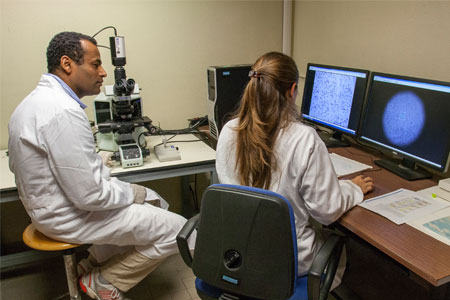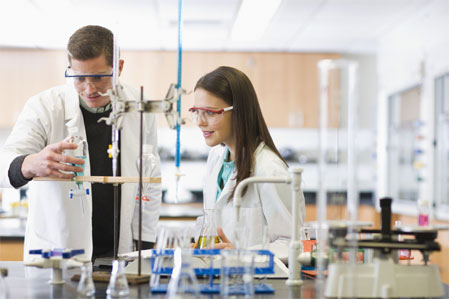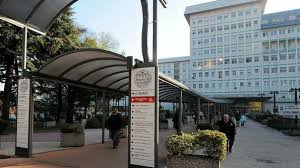Aim of the research:
1) To analyse the genetical and biochemical mechanisms allowing the shift to the VNC state. This will be performed in Escherichia coli and in Enterococcus faecalis, micro-organisms which are known to be faecal contamination markers. The chemical composition of the peptidoglycan (together with the other cell wall polymers) will be analysed on the basis of the knowledge that cell wall plays an essential role in bacterial shape maintenance and during cell division of both gram-positive and gram-negative bacteria. Protein composition analysis will allow us to evaluate the role of specific gene(s) during the VNC transition and to identify specific targets for detection of bacteria in the VNC state.
2) Search in the water of lake Garda (Verona, Italy) of the VNC forms. In a preliminary research VNC forms will be detected by counting CFU/ml in parallel to microscope and Coulter Counter counting. Methods based on molecular biology will be developed to asses viability of the VNC forms. Tests will be developed by using polymerase chain reaction (PCR) and to quantify them by competitive PCR (cPCR).
3) Studies will be started to evaluate the possibility to resuscitate and re-virulentate the VNC forms collected from the lake water as previously described for marine bacteria.
Results:
The following results were obtained during the second year:
1. The biochemical composition of both Enterococcus faecalis and Escherichia coli cell wall in the VNC state was analysed. VNC enterococcal cells appeared as slightly elongated, endowed with a wall more resistant to mechanical disruption than dividing cells. Analysis of the peptidoglycan chemical composition showed an increase in total cross-linking which rose from 39% in growing cells to 48% in VNC cells. This increase was detected in oligomers of a higher order than dimers such as trimers (+24%), tetramers (+37%), pentamers (+65%) and higher oligomers (+95%). Changes were also observed in penicillin binding proteins (PBPs), the enzymes involved in the terminal stages of peptidoglycan assembly, PBPs5 and 1 being the prevalent, and in autolytic enzymes, with a 3-fold increase in the activity of latent muramidase-1 in E. faecalis in the VNC state. Accessory wall polymers such as teichoic acid (TA) and lipoteichoic acid (LTA) proved unchanged and doubled in quantity, respectively, in VNC cells in comparison to dividing cells. When entering the VNC state, E. coli cells miniaturised and became coccus-shaped. The cell wall of VNC cells was much more resistant to mechanical injury than their dividing counterparts. Analysis of peptidoglycan chemical composition, by separation in HPLC of muropeptides released by muramidase digestion of purified peptidoglycan, showed a high degree of cross-linking, a 3-fold increase in unusual DAP-DAP cross-linking, an increase in muropeptides bearing the covalently bound lipoprotein, and a shortening of the average length of glycan strands. Analysis of enzymes involved in the terminal stage of peptidoglycan assembly and capable of penicillin binding (penicillin-binding proteins, PBPs) showed the disappearance of high-molecular-weight PBPs 1A, 1B, 2 and 3. Finally, VNC cells displayed an autolytic capability which was far higher than that of exponentially growing cells. It is suggested that all these alterations are specific to the VNC state and can be explained as a survival mechanism which is adopted by both E. coli and enterococci under unfavourable environmental conditions and is probably necessary for subsequent re-growth. These specific changes would appear to be the result of gene expression during the VNC state rather than of simple cell ageing, in that a control consisting of UV-killed cells of E. coli and enterococci aged in the same conditions to obtain the VNC state of living cells yielded very different results to those described above.
2. We described a competitive PCR (cPCR) protocol to detect and quantify a specific sequence of DNA from culturable and nonculturable E. faecalis cells present in water samples. The target for DNA amplification was the pbp5 gene that we showed to be species-specific. The protocol was found to be specific and capable of detecting amounts of DNA up to 0.1 pg corresponding to approximately 2 cells ml-1. Moreover, it allows an internal standard to be used to quantify the amount of specific DNA present in samples from different environments. The application of this cPCR method to water samples from Lake Garda enabled us to demonstrate the presence of nonculturable forms of E. faecalis in lake water and to quantify their DNA and the corresponding concentration of nonculturable cells. In particular, we estimated titres of nonculturable E. faecalis cells ranging from 24 to 2,000 cells/ml in lake water samples that were devoid of culturable enterococci. In our opinion, this potential hazard should not be underrated with a view to the microbiological quality of water.
3. The quantitative determination of the resuscitation ability from the VNC state was estimated in three different species of enterococci (namely E. faecalis, E. faecium and E. hirae). In these micro-organisms, the rate of resuscitation in a young VNC population was estimated 1x10 –3 and was also detectable in three-month old VNC cells. Five month old VNC cells were proved, on the contrary, devoid of resuscitation ability, thus demonstrating that those cells were really died cells. These in vitro experiments could be important in that they allow us to estimate how lasts the VNC phase and how, in consequence, persist medically important bacteria in natural environments.







